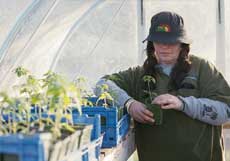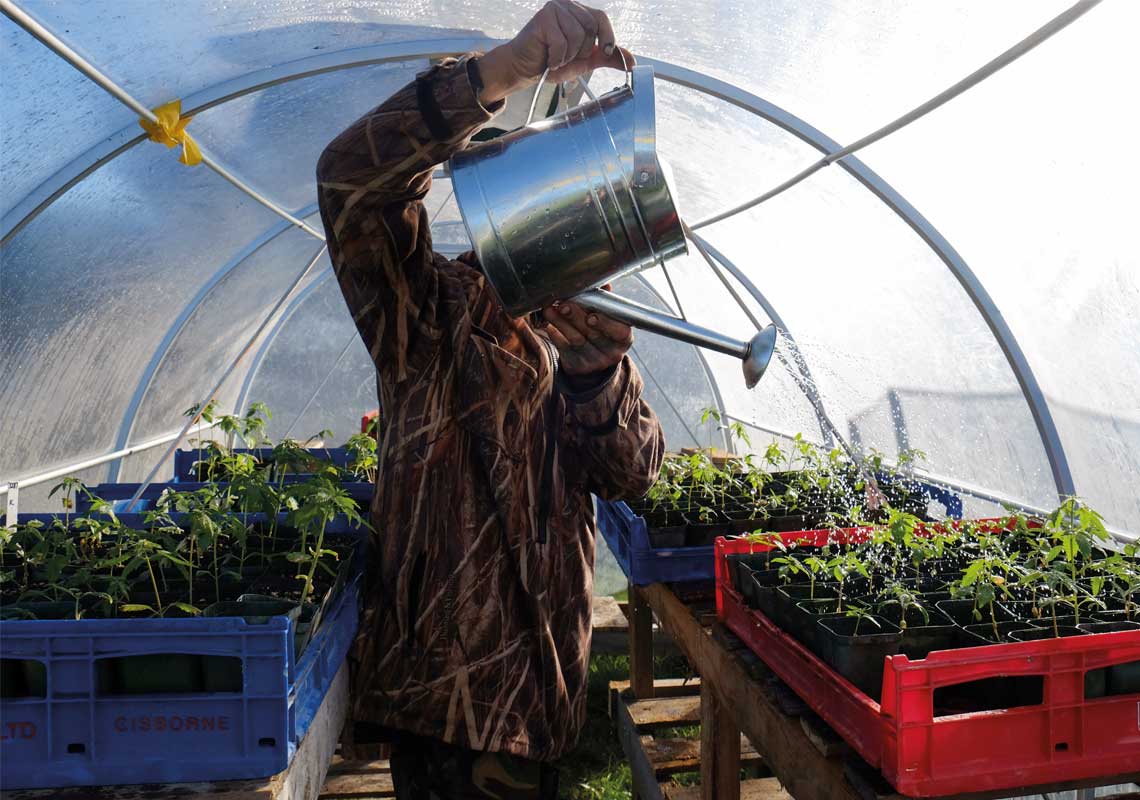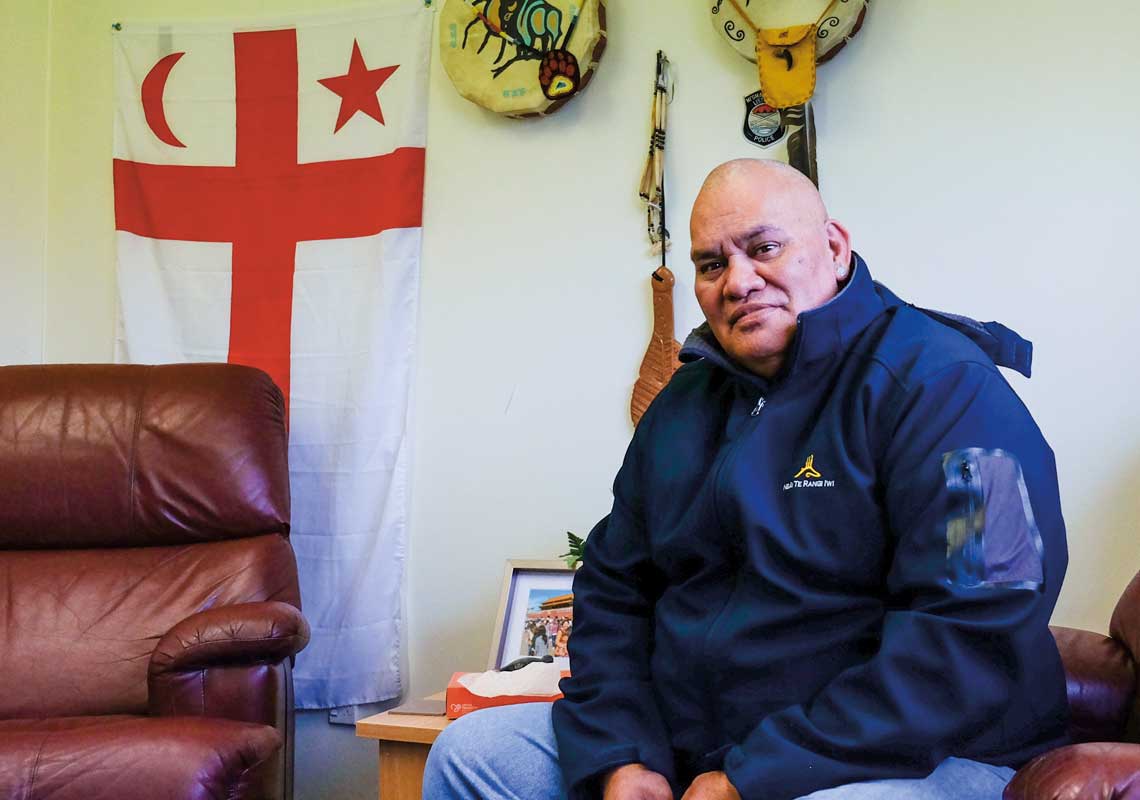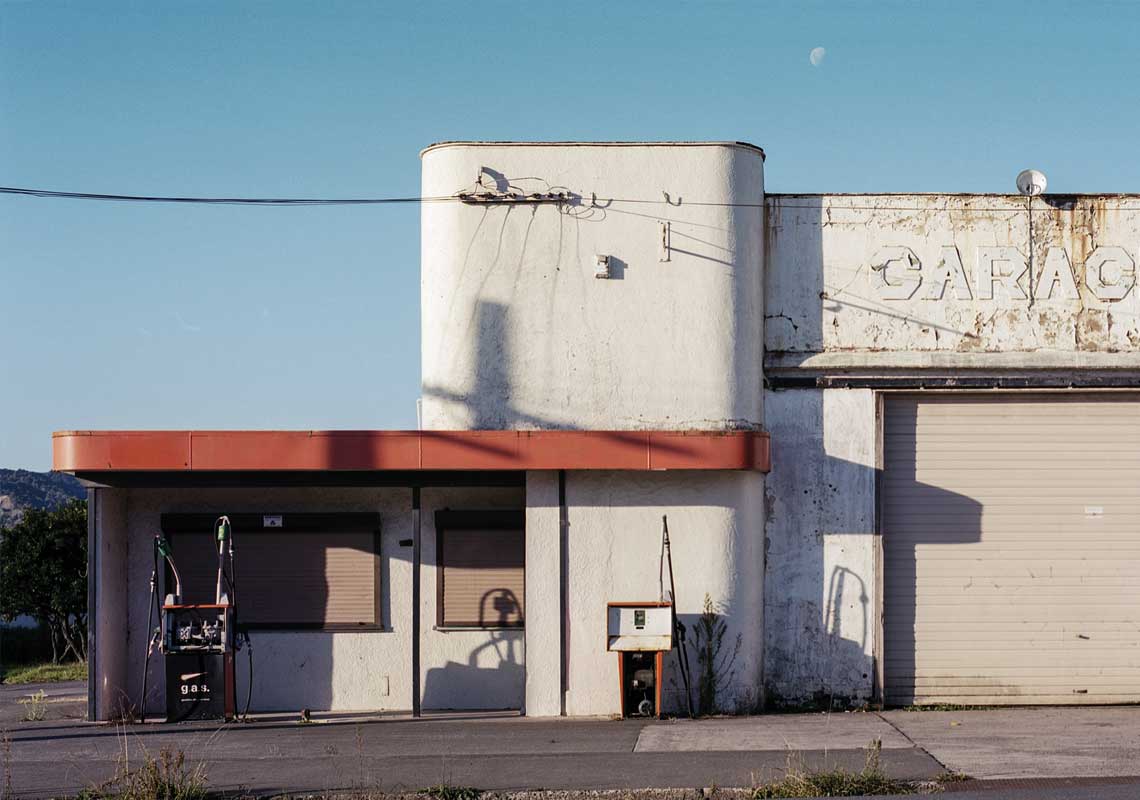Māori enterprises gear up for medicinal cannabis market

New Zealand could soon have a local medicinal cannabis company. Some Māori enterprises are gearing up to win a share of the market. These early expressions of interest have many motivations, as Tess McClure recently discovered. This article is brought to you in partnership with Vice NZ.
The road to Ruatoria is long – eight hours from Auckland and two from Gisborne, the nearest town to pass as an urban centre. Often, you are the only car on the road. On the radio, channels drop away one by one, until the only station is Radio Ngāti Porou – bulletins in te reo, jukebox jams with Ken. Undulating mānuka gives way to the dark uniformity and order of radiata pine.
At an isolated sheep-shearing shed in a Ruatoria valley, a crew of growers arrive to pick up planting pots. It’s well past harvest time now, but a few weeks back, this room was filled with bunches and bunches of drying hemp. A few sacks of buds are still here, giving off their sweet, heavy scent. One of the men ducks out of photos: “Camera shy.” Before he did this, he used to grow cannabis illegally. “Got sick of ducking and diving,” he says. Now he’s looking at doing hemp by the books.
“Think about it. That’s a positive thing,” his companion chips in. “These guys” – he sweeps a hand around at the sheep shed – “they’re thinking about the people. That’s different to corporate companies coming in and taking over.”
‘These guys’ are Hikurangi Industries, racing to be among the first legal producers of medicinal cannabis in New Zealand. Currently, they hold a commercial hemp-growing licence. As they wait for New Zealand’s medicinal cannabis reform to move through the legislation process, they’ve begun training locals to grow and process hemp – the plant cousin of cannabis – so they’re ready when the time comes.

Man watering cannabis plants - The sustainable primary production course covers all aspects of production.
Racial injustice has been a key driver of international drug reform. But in America, a chasm has emerged between the communities of colour disproportionately hit by drug policing and the primarily white entrepreneurs making huge sums off a billion dollar legal industry. In 2016, a Buzzfeed investigation found just 1 percent of weed dispensaries were owned by black people. A number of states had introduced laws meaning those with drug convictions were banned from involvement in the legal industry. “After having borne the brunt of the ‘war on drugs’,” they write, “black Americans are now largely missing out on the economic opportunities created by legalization.”
Here in New Zealand, it’s Māori communities who have most often been hit by racial bias in drug policing. Even when accounting for rates of use, at every stage of the criminal justice system, Māori are more likely to be apprehended, charged and given a prison sentence than their Pākehā pot-smoking counterparts. In a 2007 report, for example, Corrections notes that, on the basis of equivalent usage of cannabis, Māori experienced arrest at three times the rate of non-Māori users.
Now, New Zealand is poised to legalise medicinal cannabis. But who stands to benefit from a legal industry? And what’s to stop those who were disproportionately affected by drug laws from continuing to lose out?
A lot of Māori are suppressed by low-level cannabis convictions... They can’t get good jobs because of a criminal record.
Rob Thomson sits with his partner Lisa at a veranda table of Te Puia Hotel while the rain drums down around him.
He wears a thick knitted wool vest, a carved bone pendant at his neck. His dreadlocks reach almost to his waist. His preschooler daughter is sitting on his lap. Lisa has a thick sweep of black hair, moko kauae tracing her chin.
“I’ve spent probably five or six years of my life in prison for growing marijuana,” he says. “For me, that’s just a waste of life. A waste of our people’s time for a crime that doesn’t hurt no one.”
A lot of Māori are suppressed by low-level cannabis convictions, he says. They can’t go overseas. They can’t get good jobs because of a criminal record. Many are having entire years of their lives frittered away in prison for small-scale drug offending.
“For me, it really hurt me, but it was my wāhine and my tamariki outside that really suffered,” he says.
These days, he and Lisa tutor a hemp-growing course at EIC – the tertiary provider partnered with Hikurangi – and are waiting on a growing licence. His 80-year-old mother has applied for a growing licence too, he grins. “Nanny hempsters!”
Thomson is something of an evangelist for the scheme now. Two of his nephews died in forestry. He wants other jobs for young Māori.
“Our people are just sick of the forestry because of how many deaths – especially with young men. So we don’t want to go in the forest, so what’s the next option we’ve got? Hemp is the option for our people.”

Chief Executive of Te Rünanga o Ngāi Te Rangi, Paora Stanley.
On the road from the sheep shed, thick acres of pine alternate with the red, scabbed earth left by logging trucks. Justin Tibble is driving, sunglasses perched on top of his cap. He’s from around here, but he spent 20 years away from home, working as a builder and truck driver. “When you talk about employment on the coast, there’s – for want of a better word – sweet eff-all.”
The only place for young men to work is felling the colossal pine trees that line the gravel road he’s driving. And there, they keep dying. Forestry is a dangerous game: 26 dead in the past five years alone. In the records, each death is summarised by a short, brutal sentence: “Crushed by a falling tree.” “Struck by falling tree.” “Struck by tree.”
When he heard about Hikurangi, Tibble came back to train in hemp growing, buoyed by the hope of good jobs at home at the other end.
Twenty-two percent of the region are employed in forestry. But Tibble thinks the people out here who went for the promise of timber 20 years ago are done with it now.
“People are sick of the lies they got sold 30 years ago about forestry. They planted up their land with pines, it takes 25 years. But now it’s time to harvest, and it’s not worth enough.” He points to the banks of pine again. “Out of all these trees, you won’t get many rich landowners. And they’re left with barren land.”
Pine is tough on the land and rivers. In June, an enormous load of fallen trees and logging debris – around 1 million tonnes of forestry slash – swept down the waterways, damaging 61 bridges in its path. The earth, too, has been exhausted. Radiata drains the soil of its fertility. Then, when the pines come down, heavy rains quickly wash away topsoil. The erosion clogs and poisons the waterways.
“The hemp, this is something positive for our whenua. We are people of the land, so it’s our turn to give something back. The hemp puts the nitrogen back in the soil that the pine trees drain out,” says Tibble, gesturing out the window.
Peter Solitt, on the seat behind him, is nodding. Solitt has also returned to Ruatoria for this. Before, he was working in the quarries in Gisborne.
“It’s brought a little bit of hope here,” says Solitt. “A lot of politicians haven’t done much, to be honest. That’s my personal opinion. Hikurangi has created opportunities for us – something that wasn’t here before.
“Yeah bro,” Tibble nods from the front. “That’s it. Something that wasn’t here before.”
The hemp, this is something positive for our whenua. We are people of the land, so it’s our turn to give something back.
Justin TibbleHikurangi’s plan is to grow and process their crop centrally, but local landowners and residents can also get licences to grow on their own land and supply the company.
We visit one of their gardens. It’s winter time, and there’s no hemp. Instead there are raised beds for vegetables.
Further up the road, we stop at a greenhouse filled with hemp seedlings. Kathy, a student turned tutor, sets up one of the men watering plants. If she wasn’t doing this, she says, she’d be back on the benefit. She used to get calls from Work & Income telling her if she couldn’t get a job there, she’d need to look at leaving Ruatoria, shifting out to Gisborne where the jobs were.
––––
Economically, things are tough out here. Unemployment in Ruatoria sits at 15.6 percent – more than triple the national rate. At the last census, median annual income for a potential earner – that’s 15 years and older – was just $17,100, about 30 percent lower than the national average and less than half New Zealand’s living wage.
Poverty levels are high. In 2015, economic reports found the area had the worst regional economy in New Zealand and the nation’s poorest population. There is a deep-running spirit of generosity and cultural connection. Ninety-three percent of the population are Māori, and about half speak te reo fluently. According to a McGuinness Institute discussion paper, people here donate proportionally more time and money to their community than anyone else in the country.

Driving an SUV over unsealed road, Manu Caddie points out the window to a scrubby passage of flat land. “This used to all be maize a few years back,” he says, “but it could all be hemp.”
Caddie is Hikurangi’s Managing Director. His head is shaved, and he wears khakis with a grey work shirt. The company is still watching closely to see where New Zealand’s legislation goes, but they’ve designed clinical trials and plan to start them this time next year. In May, they raised $2 million of investment on PledgeMe, generating traffic so high it managed to crash the crowdfunding website. Currently, they employ 15 growers. If they can get their licence to grow once the law changes, he estimates their growing and processing facility will employ 120 staff, many of them locals.
“Seems like, in the states that have legalised, it’s been good for young, white guys but not so good for young people of colour,” Manu says.
He’d like to see that picture reversed in New Zealand, and the company works with guys who have previously grown illegally, utilising skills that were penalised by the criminal justice system.
“A number of the guys that have grown for us now had been in jail and come out, had not wanted to go back to jail, so they weren’t growing any more. but they sort of had those latent skills that they’d developed over many years. And so they’ve come back into growing plants – in a legal way.”
His hope is that the jobs will draw back whānau from years of urban drift.
“It’s about whānau being able to live on their land that they might have been away from for two or three generations. It’s about the health of the paepae, speakers and kaikaranga that can maintain the traditions and ways of doing things. So I think there’s cultural benefits as well as economic and social benefits.
Hikurangi’s future as a medicinal cannabis grower relies on the law makers in Wellington. Even a slight tweak to legislation could present challenges to them existing in the market at all. In Canada and some American states, for example, some legislation means those with criminal convictions – or even connections with others involved in criminal activity – are banned from holding positions in the medicinal marijuana industry. If New Zealand imported similar legislation, it would leave many members of communities like Ruatoria cut out of the picture.
It’s about whānau being able to live on their land that they might have been away from for two or three generations.
Manu CaddiePinned to Paora Stanley’s office door in Tauranga is a portrait of a man in his mid-20s advancing on the camera. He has four bullet holes through his forehead. Around 30 more are ripped through his paper torso.
Target practice, Stanley says, from when he was CEO at the Listuguj First Nation reservation. There, he had his own Police force and invested in heftier firepower. “I’m from a weapons and explosives background,” he says, gesturing at the targets. There are very few missed shots.
Stanley is Chief Executive of Te Rūnanga o Ngāi Te Rangi. He wears an enormous pair of tan work boots with blue jeans. His head is shaved. On the reservation in Quebec, the tribe said his spirit animal was a bear and gifted him a bear tooth that hangs from the wall. A coyote skin is draped over the desk chair. A taiaha leans on the windowsill.
He is, in some ways, an unlikely candidate for involvement in New Zealand’s cannabis scene. An ex-military teetotaller – doesn’t drink, doesn’t smoke – he introduced random drug testing when he came to take the position at Ngāi Te Rangi. Before he was with the military, he studied public health and wrote his thesis on Māori experiences of addiction. “Keep in mind I’d been an anti-drug campaigner for two decades,” he says, “so I really needed to be convinced.”
Then, one day, he got a call from his long-time friend, unionist Helen Kelly. “Would he consider getting involved in medicinal cannabis?” she asked. He replied no.
“I was stuck on several things,” he says now. “Bloody stoners ruin a lot of my people’s lives!”
She asked him to reconsider. “And I said no again,” Paora says. “Then she told me she was dying.”
He decided to have a look into it. As an ex-military man, he found the evidence around medicinal marijuana’s use for treatment of PTSD compelling. Research around its use for treating epilepsy is also strong. But ultimately, it was some of the evidence of medicinal cannabis’s efficacy as a pain treatment for cancer patients that tipped him over the edge.
“Both my mother and father and many of my family have died from cancer, and again that changed my view to it,” he says.
“For the people who are suffering from the side-effects …” He pauses. His voice cracks slightly. “I wish my dad who died didn’t have to go out on morphine. I wish that this was a product he could have used, he would have gone out lucid. I wish it was there for him and some of my other buddies and friends who died.”
Working as the Chief Executive of Listuguj First Nation reservation, he decided with the tribe to invest in Canada’s emerging medicinal marijuana industry. They started relatively small, investing $4 million into building a medicinal marijuana facility. “That $4 million is now worth $26 million,” he says. Back in New Zealand, in his new role at Ngāi te Rangi, he’s cautiously looking at how the iwi can invest in the medical industry.
You already know that there is a lot of interest in it, and there is certainly a lot of iwi interest in it.
Paora StanleyIdeally, he is looking for the tribe to invest in facilities in Canada to develop business experience in the sector. “And then by the time this country opens up to medicinal marijuana, you then bring that back to this country and initiate it here.”
If New Zealand’s model ends up resembling Canada’s highly regulated industry, there’s enormous buy-in costs, he says. There, paying for indoor growing facilities – security fences, regulation-thick walls, lighting and temperature controls – can quickly soar into the tens of millions. Overseas, those buy-in costs can mean economically disenfranchised groups – like African-American communities – struggle to enter the industry. Here, iwi have cash to invest on behalf of their people.
Stanley says developing a local industry with Māori as key players means the cash tends to stay in the community rather than heading off shore via large-scale pharmaceutical companies. “So the money and the benefit of it actually don’t go out of the province,” he says. “They often don’t go out of the city. Māori organisations, the majority of profits stay within 100km of its epicentre. Ours will usually stay within 50km. 90 percent of our profits and benefits will only be within a 50km radius from here. Māori money that is generated stays locally.”
“You already know that there is a lot of interest in it, and there is certainly a lot of iwi interest in it. It’s because of the money. Iwi have got to be able to turn around money for the benefit of their people. Some people with a racist streak will say, ‘You horis are good at making marijuana out south.’ Well that ain’t really it either. It’s actually about medicinal marijuana, it’s different.”
Recent news

Reflections from the 2024 UN Commission on Narcotic Drugs
Executive Director Sarah Helm reflects on this year's global drug conference
What can we learn from Australia’s free naloxone scheme?
As harm reduction advocates in Aotearoa push for better naloxone access, we look for lessons across the ditch.

A new approach to reporting on drug data
We've launched a new tool to help you find the latest drug data and changed how we report throughout the year.

